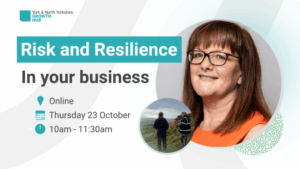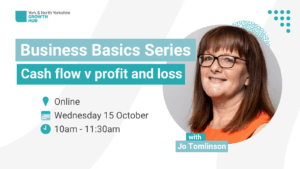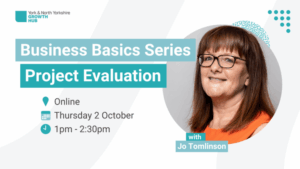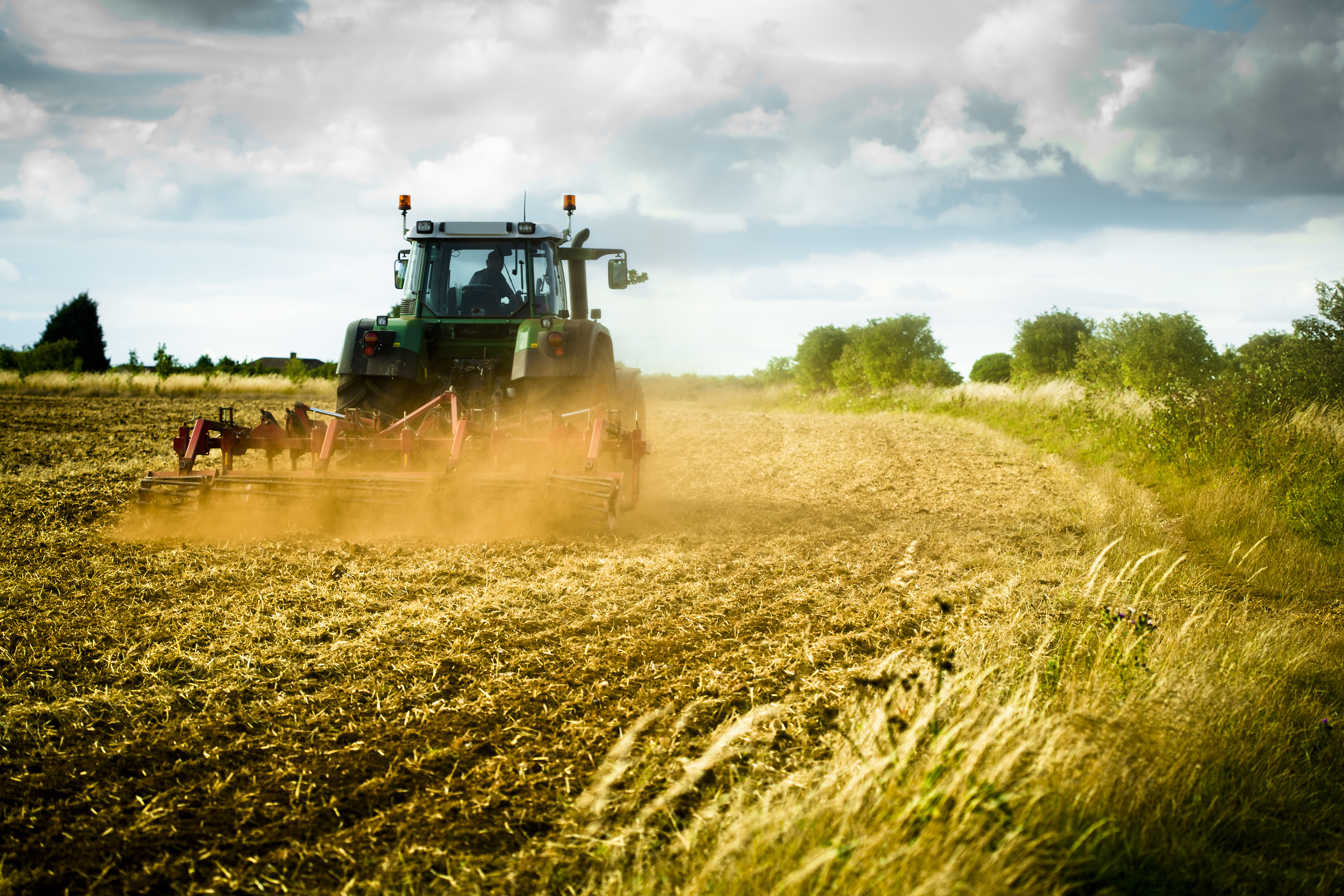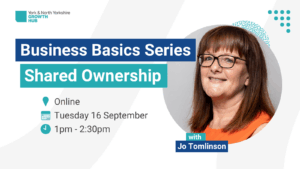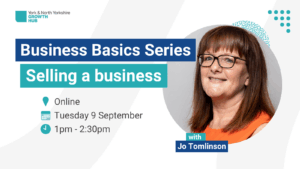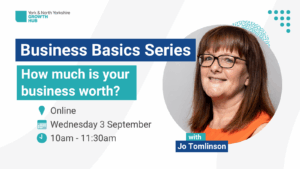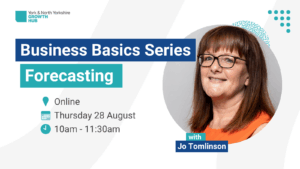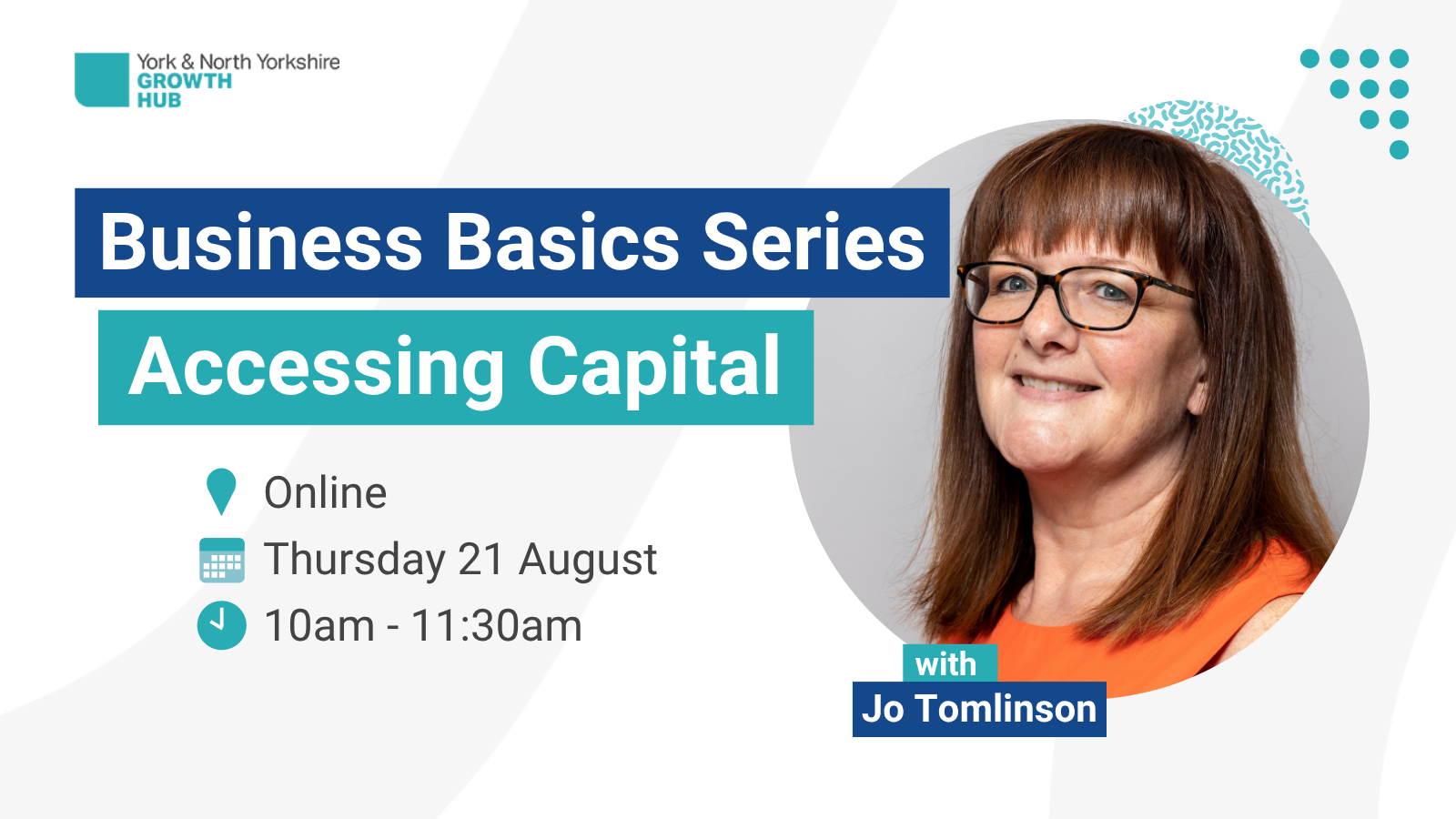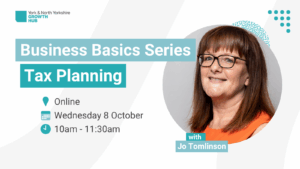Business Essentials – VAT
VAT (Value Added Tax) is added to most products and services sold by VAT registered businesses. The main rate of VAT in the UK is currently 20%, although some goods and services are vatable at the reduced rate of 5% or are zero rated. There are also goods and services that are exempt from VAT or fall outside of scope for VAT.

When must you register for VAT
You must register for VAT if your taxable turnover for the last 12 months (a rolling 365 days) goes over £90,000, or you expect that your taxable turnover will go over £90,000 in the next 30 days. You are expected to monitor your turnover so that you can register in good time, as once you register, it can take 4 weeks or more for you to receive your VAT registration number, and you are not allowed to charge VAT unless you quote your VAT registration number on the invoices you raise.
When your turnover is gradually increasing, and is relatively unpredictable, if your turnover for the last 12 months, or since you started trading, if that is less than 12 months, goes over £90,000, you have 30 days to register for VAT from the end of the month when you went over the threshold. Your effective date of registration is the first day of the second month after you go over the threshold.
| End of July | Turnover in the previous 12 months is more than £90l for the first time |
| End of August | Register for VAT |
| 1st of September | Effective data of registration |
If your business model is that you are tendering or quoting for chunky pieces of work, where any one of these can push you over the threshold, due to its size, the rules differ slightly. Let’s say you win a big contract on 1st May for £100k, payable by the end of May, then you must register for VAT before the end of May and your effective date of registration will be the 1st May, as this was the date that you became aware that you would breach the threshold in the next 30 days.
Taxable turnover for this test is the total value of everything you sell that is not exempt from VAT or out of scope. This includes:
- Zero-rated goods
- Reduced-rate goods
- Standard-rated goods
- Goods you hire or loan to customers
- Business goods used for personal reasons
- Goods you bartered or part-exchanged, or gave as gifts
- Services you received from businesses in other countries that where subject to ‘reverse charge’
- Goods and services which are subject to the ‘domestic reverse charge’
If you are late registering for VAT, you must pay VAT on any sales you’ve made since the date that you should have registered. You may also need to pay a penalty, depending on how late your registration is, and how much you owe.
If your supplies are exempt from VAT, you are not making taxable supplies, and you will not be allowed to register for VAT.
Voluntary Registration for VAT
You can choose to register for VAT if you are making taxable supplies and your turnover is less than £90,000. You may want to voluntarily register for VAT if:
- Your customers/clients are VAT registered, so can reclaim the VAT you charge them
- You want to reclaim the VAT on goods and services your business purchases
Displaying a VAT registration number can lead to the perception of size, as most people will believe that you have only registered because your turnover has breached the threshold. This can be beneficial, if potential customers/clients believe that this suggests that you are successful.
How to Register for VAT
You register for VAT online. You will need a Government Gateway user ID and password to register. If you don’t already have one, you can create one when you sign in for the first time. You will be asked a few details when you register including:
- Your company registration number
- Business bank account details
- Your company UTR (unique tax reference)
- Details of your annual turnover
You can save your application and go back to it later if you need to.
Note – in certain circumstances you cannot register online.
It can take a few weeks for the registration to go through, but when it does, you will get:
- A 9 digit VAT registration number which must be included on all invoices you raise
- Information about when to submit your first VAT return and payment
- Confirmation of your registration date (known as the effective date of registration)
Once registered you can also reclaim the VAT on any business expenses where you have been charged VAT, including on some pre-registration expenses.
Claiming pre-registration VAT
Where a business buys goods or services before it registers for VAT, to support taxable business activities when it is registered, it can recover the tax provided that:
- Goods – where the goods remain in hand at the date of registration and will be used in the newly registered business. The goods must have been purchased within 4 years of registration
- Services – purchased within 6 months of registration
This process involves getting together all receipts for expenses that fall within these date limits and then detailing them out, including the VAT amounts from the receipts. A journal is then processed into whichever bookkeeping software you are using dated the effective date of registration.
You must have a VAT receipt for each qualifying expense to be able to reclaim this VAT.
VAT Schemes
When you register for VAT, unless you are a large business, you will end up on the default VAT scheme unless you apply to be on one of the other schemes. VAT schemes are designed to simplify the way some VAT-registered businesses calculate and account for VAT to HMRC. These schemes do not change how much VAT you charge on products and services you sell and they are voluntary to join.
Standard Accrual Scheme
What does it do? This is the default VAT scheme. It uses the date on your sales invoices and the date on your receipts as the VAT tax points for your VAT return
Who can use this scheme? Anyone registered for VAT in the UK
How do you join the scheme? By applying to register for VAT
Example:
- Sales in the period are £10,000 plus VAT = £12,000 gross
- Purchases in the period that have VAT receipts £2,000 plus VAT = £2,400
- You pay the difference between the VAT on your Sales and the VAT on your purchases. In this case £2,000 – £400 = £1,600
Cash Accounting Scheme
What does it do? You pay VAT on your sales when your customers pay you. You reclaim VAT on your purchases when you have paid your suppliers
Who can use this scheme? VAT taxable turnover must be less than £1.35m to join this scheme.
How do you join the scheme? You do not have to inform HMRC. But you will need to change the way that you account for your VAT in your bookkeeping software.
Example: This scheme is hugely beneficial if you have slow-paying customers/clients. If they take longer than 5 weeks to pay and you are on the accrual scheme, you could end up paying VAT on sales invoices that you haven’t received the money for.
Flat Rate Scheme
What does it do? You work out what you owe HMRC in VAT as a percentage of your gross turnover. The percentages are industry/business type dependent, and you will find them on a table on the HMRC website.
Who can use this scheme? Businesses with annual turnover of £150k or less excluding VAT
How do you join the scheme? Apply to HMRC
Note: You do not reclaim the VAT on purchases under this scheme. However, you can reclaim the VAT on any capital purchases over £2,000
Example:
- An accountant or bookkeeper has a rate of 14.5%
- Sales in the period are £10,000 plus VAT £12,000 gross
- £12,000 x 14.5% = £1,740 this is what you pay to HMRC
Note: You get a 1% discount on your percentage rate in the first year of VAT registration
Note: If your costs are less than 2% of your turnover or less than £1k a year, then you will default to the rate of 16.5% as you will be classed as a limited cost business
There is a cash version of the flat rate scheme.
Annual Accounting Scheme
What does it do? You only submit 1 VAT return each year.
You pay monthly towards this VAT bill – based on your last return or an estimate if it is your first one.
When the VAT return for the year is submitted, you will have a balancing payment to make (if its more than the advance payments made), or apply for a refund if you have paid too much
Who can use this scheme? VAT taxable turnover must be less than £1.35m to join this scheme
How do you join the scheme? Ask to join this scheme when you register for VAT, or if later, apply using VAT600 AA by post
Monthly Returns
What does it do? Instead of submitting quarterly VAT returns, you can apply to submit returns and make payments monthly. Large businesses have to submit monthly VAT returns (these businesses owe at least £2.3m in VAT annually)
Who can use this scheme? Anyone registered for VAT in the UK
How do you join the scheme? Apply online or use VAT 484 to send in the post
Note: If you apply to make monthly returns, you may have to make them for at least a year before you can go back to quarterly. This can be beneficial if you are in a regular refund situation. Generally, this applies to the building industry.
VAT Schemes for particular types of Business
VAT Schemes for Retail businesses or those selling second hand goods.
- Margin Scheme
- Point of Sale Scheme
- Apportionment Scheme
- Direct Calculation Scheme
VAT scheme for tour operators – Tour Operators Margin Scheme TOMS
Businesses who cannot join one of these schemes:
- You left the scheme in the last 12 months
- You committed a VAT offence in the last 12 months
- You joined (or were eligible to join) a VAT group in the last 24 months
- You registered for VAT as a business division in the last 24 months
- Your business is closely associated with another business
- You’ve already joined another scheme
Direct Debit
If you sign up to pay your VAT via direct debit, you will be given an additional few days to pay your VAT, as the direct debit won’t be requested until the due date, but collection will be a few days later (3 working days).
De-registering from VAT
You must cancel your VAT registration if you are no longer eligible to be VAT registered. For example:
- You stop trading or making taxable supplies
- You join a VAT group
You must cancel within 30 days or you may be charged a penalty
If your turnover falls below £88k, you can ask HMRC to cancel your registration, unless
- You and your business are based outside the UK
- And you supply any goods or services to the UK (or expect to in the next 30 days)
The main rules of VAT
The VAT system is complicated, and the devil is in the detail when it comes to processing VAT’able transactions. So, what are the basic rules of VAT.
- You must charge VAT on everything you sell once you are VAT registered, and it is down to you to know what rate to charge these goods and services at.
- You must display your VAT registration number on your sales invoices
- You should display the VAT rate you are charging on your sales invoices
- You must have receipts for all expenses where you are looking to reclaim the VAT
- The VAT you reclaim must match the amount on the VAT invoices you have saved
- If you do not have a valid VAT receipt, you cannot reclaim the VAT and must process it with zero rated VAT – even if the goods or services you have purchased are subject to VAT
- You must keep records for 6 years, plus the year that you are in, in case HMRC ask to see them.
- You must account for VAT on any goods you import into the UK
- You must file a VAT return either quarterly, monthly or annually
- If you charge more VAT that you have paid, then you must pay the difference to HMRC
- You can appoint an agent to deal with HMRC on your behalf for VAT
The rate of VAT that is chargeable is an area of huge complexity, there are lots of relatively standard rules, but then lots of exceptions to those rules, or details that change the treatment, so it is always worth checking if you are unsure.
Standard Rated Goods and Services
Most goods and services are charged at the standard rate of 20%.
Zero-rated items examples
- Books and newspapers
- Children’s clothes and shoes
- Motorcycle helmets
- Most goods you export
- Food and drink for human consumption is usually zero rates unless it is:
- Catering
- Alcoholic drinks
- Confectionery
- Crisps and savoury snacks
- Hot food
- Sports drinks
- Hot takeaways
- Ice cream
- Soft drinks and mineral water
- Any food eaten on the premises of a restaurant
- Charity shops selling donated goods
- Equipment for disabled people
- Sanitary products
- Modifications to residential properly for disabled people
- New Build residential property
Exempt examples
- Betting and gaming
- Admission to museums and zoos etc
- Medical treatment provided by a hospital, hospice or nursing home
- Doctors, dentists, opticians etc
- Educational training provided by an eligible body
- Public postal services provided by royal mail
Reduced Rate examples 5%
- Utilities
- Energy saving materials if installed permanently in residential properties
- Mobility aids for the elderly
- Nicotine patches and gum
- Radiators
- Boilers
Outside of scope for VAT
- Voluntary donations to charity
- Payroll
Complicated Tax matters
Some areas of tax are inherently more complex than others, I will mention a few of the complicated areas here.
Food and specifically takeout food
If you own a café or restaurant, you will find getting your head around VAT and correctly accounting for it could be more complicated that you think. There are complex rules around cakes and biscuits and when they are zero rated and when they are standard rated (there have been lots of high profile cases around this in recent years). Then there are the complex rules around the temperature of food.
If food is eaten in your premises, then the rules are fairly simple, in that everything is standard rated for VAT. However, if you provide food to take away, do you provide it hot, or cold or incidentally hot?
- Food served hot, advertised as hot, or in a container to keep it hot – 20%
- Food cooked on premises during the day, that may be hot, or may not be hot when its sold, and isn’t advertised as being hot, or heated for you, or in a container to keep it hot – 0%
For many café/restaurant owners, this can cause many issues in the set up of the point of sale device. But you can also consider one of the specific retail schemes, if your device can not accurately reflect these rules on every single transaction.
Construction Industry – CIS reverse charge for VAT
A very complex area, specific to construction and the areas of construction covered by the Construction Industry Scheme (CIS).
Fundamentally if the following apply, then you do not charge VAT, but use the reverse charge rules:
- The supply falls within the scope of CIS
- The supply would ordinarily be standard rated
- The customer is VAT registered
- The customer is registered for CIS
- The customer is not an end user
If the invoice you are raising falls within the rules of the reverse charge, you must not charge VAT on your invoice, but you must include a statement advising your customer (or contractor) that the reverse charge rules apply, stating the amount of output VAT to be applied. Your customer (or contractor) will need to include that amount on their VAT return. But you will not include anything on your VAT return about the reverse charge.
If the above do not apply, then you must charge VAT as normal.
Place of Supply
If you supply services or are making supplies to customers outside of the UK, or receiving services from suppliers that belong outside of the UK then you need to understand the place of supply to ensure you get the VAT treatment of the supplies correct.
If the place of supply is deemed to be inside the UK, then normal VAT rules apply
If the place of supply is outside the UK, then no UK VAT is chargeable
There are different rules depending on whether you are supplying services to consumers or businesses. If you are supplying a business, then they should supply you with their VAT number
There are many rules in this area, covering the type of supplies and the type of business supplying them, as well as the way the supply is made. So you should definitely check with an expert if you are unsure.
Making Tax Digital for VAT
All VAT registered businesses must keep digital records and file returns using compatible software. HMRC brought this in to:
- Reduce errors
- Making filing tax easier
- Minimise time taken to enter returns
- Give businesses better financial control
The digital records that must be kept include:
- Business name, company address and VAT registration number
- VAT accounting schemes used
- VAT on goods and services supplied
- VAT on goods and services received
- The rate of VAT charged on services supplied
From April 2022, businesses could no longer enter cash takings weekly or monthly. Now daily sales amounts must be recorded.
Autumn Budget 2025 – How will it impact your business?
The language used by Chancellors during the delivery of such a Budget can often be headline grabbing, assuming you can hear them over the general noise in the House of Commons. But what filters out over the following days and weeks can regularly feel somewhat different to the words you heard during the budget speech.
Risk and Resilience in Your Business
Running a business can be risky. There are so many things that can impact your performance, and profit. Potentially destroying all that you worked so hard to build. Some of these things are impossible to plan for, but lots of potential risks can be mitigated by identification and planning.
Business Basics – Cash Flow v Profit
Many small business owners can get confused when looking at numbers relating to their business, and often this is due to cash and profit being understood as one and the same thing. It is crucial to understand the difference between these two metrics so that decision making is not flawed.
Business Basics – Project Evaluation
Projects can be anything from taking on a new person, or launching a new product, to building a manufacturing site, or acquiring a business to merge with the current one. How you evaluate each project can vary depending on size and complexity. But undertaking the exercise leads to better decision making and control.
Building Resilience and Sustainability into your Farming Business
Resilience and sustainability lie at the heart of modern farm business strategies, ensuring that agricultural enterprises can withstand economic shocks, adapt to evolving environmental regulations, and maintain profitability amid climate volatility. By embedding sustainable practices, ranging from energy efficiency to regenerative soil management, farmers not only safeguard their livelihoods but also contribute to broader goals of food security and environmental stewardship.
Business Basics – Shared Ownership
Directors and shareholders of UK companies have many rights and responsibilities, but how do these change when you are one of a number of shareholders in a company?
Business Basics – Selling a Business or Shares in a Business
Being aware of your business's value enables you to determine a fair selling price for some or all of your shares and negotiate efficiently with prospective buyers. But where do you find a buyer for your shares, and what happens now?
Business Basics – How much is your Business Worth
Being aware of your business's value enables you to determine a fair selling price for some or all of your shares, negotiate efficiently with prospective buyers, and secure beneficial financing deals, among other advantages.
Business Basics - Forecasting
Although we don’t have a crystal ball, so forecasts are fundamentally informed guesses, businesses need to use them to make informed business decisions and develop business strategies.
Business Basics – Accessing Capital for Growth
Gaining access to outside investment means you don’t have to give up on your dream. So how do you prove to any potential investor that your business model is worth
Farm Diversification: Where to start
According to DEFRA, 71% of farm businesses in 2023/24 have some form of diversified activity, up from 61% in 2014/15. Income from these activities produced £1.393 billion in 23/24, up from £1.321 in the previous year. This demonstrates how important these income streams have become.
Business Basics – Making Tax Digital
Making Tax Digital (MTD) for Income Tax and Rental Income is the biggest change to Self-Assessment since it was launched by HMRC over 30 years ago.
Young Entrepreneur Guide
Do you have a business idea? Or do you want to work for yourself? Then the Young Entrepreneur Guide is here to help you!


